Khachaturian “Adventures of Ivan” Piano Play-Along: Post Two (Nos. 1 and 2 Reaction)
Here’s the first reaction post for the Khachaturian Piano Play-Along! Don’t worry if you haven’t played through these first two pieces yet. You have all of August to read through the set.
Have you seen the entire Play-Along plan for August yet? You can read it HERE. Please be sure to express your own reactions here on the blog at the different posts or on the Facebook page. I really do want to know your thoughts about these very intriguing pieces.
Quick scan thoughts:
In the preface of the MCA edition, the editor, Alfred Mirovitch, describes the set as such: “The refreshing originality of mood, harmonization and pianistic invention in these easy, amusing, but provocative compositions will act as a stimulus and challenge to alert all students and teachers.” Well said. I couldn’t agree more. I found myself playing both No. 1 and especially No. 2 several times in order to fully absorb Khachaturian’s craftsmanship. For me it was his harmonic choices and interesting chord progressions that immediately tickled my ear. No. 1 is more predictable in its construction, but No. 2 was less so and I dug into that one more deeply for better understanding.
Thoughts while playing….
No. 1 – Ivan Sings (subtitled “Andantino” in the MCA edition, but not in the Schirmer)
This piece’s popularity is understandable. Khachaturian created a beautiful song without words by simple means. The lovely, plaintive melody captures you from the beginning and compells you to continue. The simple 3rds in the LH support the sweetness of character (I can’t imagine thick 3-note chords in the LH at all!), and the descending bass line and chromatic harmonic movement evoke even more melancholy.
Khachaturian made a masterful move in m. 18 for the variation of the main theme. He merely inverted the LH 3rds into 6ths, adjusted the range a bit, and added a simple touch of rhythmic syncopation for lilt. Brilliant. Now the theme sounds even more tender. Note how he also inverted the RH in m. 18, compared to m.2. The grace notes add playfulness. I’ve had to remind students to play the grace notes quickly and quite lightly, before the beat.
The other aspect I address often with students is the LH repeated notes. I tell them that they should play the repeated notes as sustained as possible to maintain a very smooth, unarticulated texture. I ask that they use a gliding motion on the keys in order to accomplish this and to watch carefully to prevent the key from coming all the way up. Here’s a student giving it a whirl:
Opening measures of LH (“gliding” somewhat exaggerated here due to slow tempo):
M. 18 LH (aiming to sustain the thumb and play it more lightly than the lower note):
Two other issues I often address:
- Tempo – students are often compelled to play this piece too fast and they have a tendency to rush the tempo during the variation of the theme in m. 18.
- Pedaling – they must be attentive to the syncopated pedaling and other changes as indicated (Mirovitch says that the pedaling is his, not Khachaturian’s.)
*I like the tempo indication of quarter note = 88. It’s reasonable for the mood.
No. 2 – Ivan Can’t Go Out Today
At first glance this piece looks rather fleeting so I checked the metronome indication first. Personally I feel that 66 to each measure seems too slow for an Allegro moderato, so I bumped it up a little (around 74-76 per measure) and it provided more direction to the phrases. It also hastened the harmonic movement so I could hear the chord progressions and cadences more clearly.
Speaking of harmony, this piece was an unusual adventure in that respect. The key center was hard to pin down at first due to all the chromaticism, but I settled on C natural minor, due to the frequent use of C minor triads, use of G leading to C, and then of course, the Picardy third at the end resulting in C Major. Interesting how Khachaturian uses only accidentals and no keysignature.
Does the music reflect the title?
With title in mind, I played this adventure at the slightly faster tempo of 76 a few times. I imagined a child’s complaint or outcry in Measures 5 thru 12:
Mounting frustration in m. 37:
Flip-flopping moods in mm. 63 thru 77:
And finally the child’s resignation with the rit. and dim. at the end. Lots of nervous energy throughout. What do you hear?
Reading Schedule:
- Introduction Post: Monday, August 11
- Khachaturian, Adventures of Ivan, Nos. 1 and 2 reaction: Thursday, August 14
- Nos. 3 and 4 reaction: Monday, August 18
- Nos. 5 and 6 reaction: Monday, August 25
- Nos. 7 and 8 reaction: Wednesday, August 27
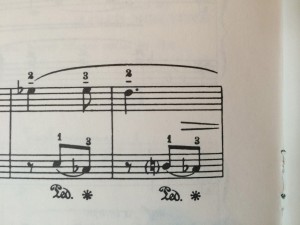
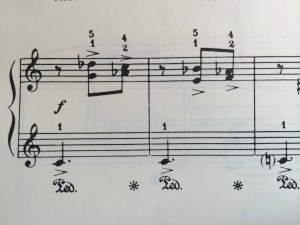
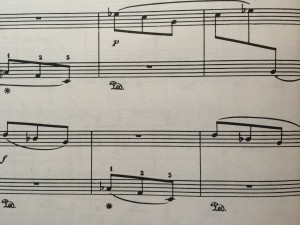


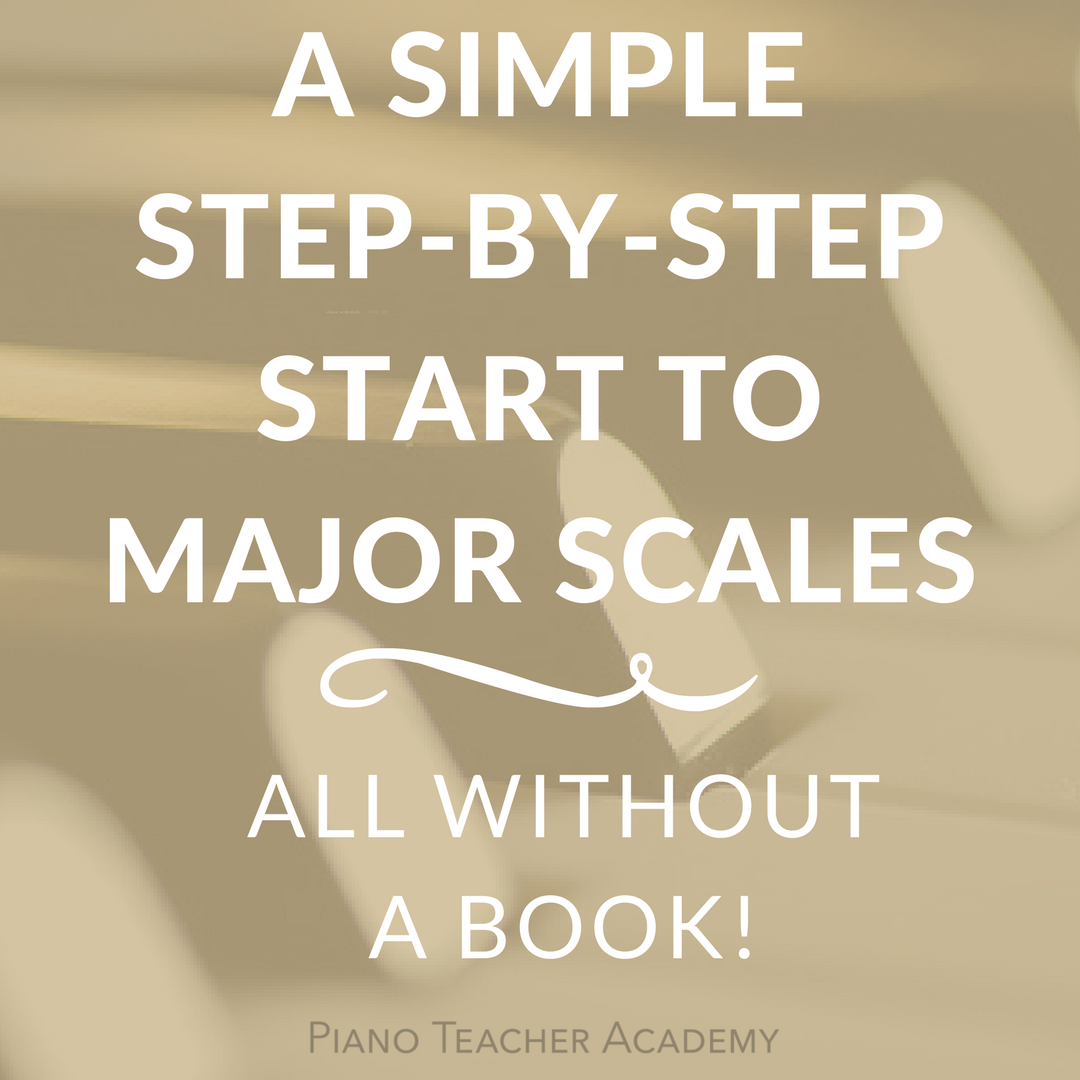
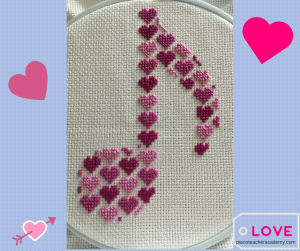





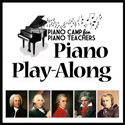
As I play and analyze each piece, I keep wondering what was Khachaturian’s inspiration for this set of pieces? Who was Ivan? How old was he? I did a search but didn’t come up with anything….
I know one thing’s for sure about playing his music… My sight-reading of accidentals and attuning my ear to the tonalities/keys he chooses is definitely challenging….! Will post more of my thoughts regarding the pieces when I have more time!
Hi Julie. I too did a search and will continue searching other sources besides the Internet to see if there was a true inspiration for this set. They are a challenge, but well worth it in the long run!
These pieces are a challenge for me to play in that the sound at first playing is not very appealing to me. I now enjoy No. 1. It helps listening to others play the pieces.
Thanks for bringing this to my attention. I’ve added two videos to the blog post. All of those accidentals can be quite gnarly during a first reading.
#1 – Ivan Sings: I remember having this as an assigned piece during my junior high school years. It was not a piece I liked playing, to be honest. I didn’t like the style or the slow feel and sound of it; the “simple” style of it didn’t speak to me and the harmonies weren’t likeable to my ears. Today, however, now that I’ve matured, you could say ;), it’s really a nice little piece. I thought it was funny that, after I had done my analysis of this piece and read Elizabeth’s, I noted the same characteristics – simple harmonic 3rd patterns in the LH, chromatically descending; careful attention to syncopated pedaling. I’d learned this piece with more of a legato pedaling years ago, but this time around I tried hard to observe the syncopated pedaling indicated. It was tricky! However, I’ve observed that Khachaturian seemed very fond of this type of pedaling. It presents clarity to his music, though.
#2 – Ivan Can’t Go Out Today: As with the rest of the pieces from this collection, my fingers wanted to play other accidentals that weren’t noted… for this piece, I wanted to play flats and sharps where they weren’t even marked! I could hear my little son’s whining and complaints while playing this piece…! He so loves the outdoors, and often when he can’t go out, he protests. But eventually he’ll reconcile with the fact that he can’t… like the calming ending of this piece. I don’t have much in-depth analysis of this piece as I would like to offer, but I must say that I do like the 2-note slurs throughout this piece. 🙂
Thanks, Julie, for your observations. I wish I could say I played “Ivan Sings.” I grew up hearing others from my teacher’s piano studio play it. Of course, I too was too young to appreciate it as I do now. So glad my teacher had such good taste in her selections for her students. 🙂
I wonder if the melancholy character stems from sadness at the persecution plight of the Armenian people who experienced genocide..
Interesting. I’ve never thought of that. That could be true because so much of Russian music from this era is quite plaintive. Thanks for your reply!